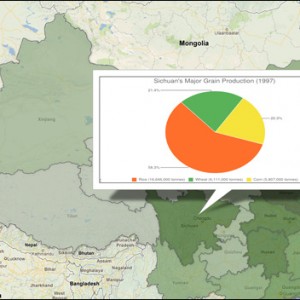Federal Water Tap, November 12: Post-election Government Back In Action: Tar Sands, Climate Change, and Coal Ash
The Bureau of Land Management will open some 274,000 hectares (677,000 acres) of public land in three Western states for oil shale and tar sands research, development and demonstration leases, according to a broad federal environmental review.
Companies must submit an application to explore on these lands, which, unlike for oil and gas leases, will be subjected to additional environmental reviews before final approval. Commercial leases would be considered only if certain conditions are met.
Questions about the water needed for such projects still remain. In an October 2010 report, the Government Accountability Office warned that large-scale commercial development of oil shale and tar sands in the Green River Formation of Colorado, Utah, and Wyoming would use a significant amount of water, but that the amount hinges on the type of technology used, the size of the industry and the supply of water, which is not fully known.
Colorado River Agreement with Mexico
Under a new deal, Mexico will be brought into the water-sharing agreements in the Colorado River Basin that used to apply only to the U.S. states, the Las Vegas Review-Journal reports. The deal also opens the door for the U.S. to pay for water conservation projects across the border and get a share of the savings in return.
Laos Dam
Responding to a question about the Xayaburi dam, a controversial hydroelectric project on the Lower Mekong River that the Lao government has unilaterally approved, the State Department said that it hopes Laos will continue to work with its neighbors.
“While these are sovereign development decisions, we are concerned that construction is proceeding before impact studies have been completed,” department spokeswoman Victoria Nuland said.
Alaska Dam Update
The deadline to comment on a proposed study plan for a large hydroelectric project in south-central Alaska is November 14. Plans for the Susitna-Watana project include a dam that would be the largest built in the U.S. since the 1960s. A revised study plan will be filed with federal regulators in December, when a second opportunity to comment will open.
Coal Ash Update
Nearly four years after a coal ash spill that choked streams and released toxic metals and chemicals into the water and soil, the Tennessee Valley Authority, an electric company owned by the federal government, will let nature do most of the remaining restoration work, according to a plan submitted last week. Comments are being accepted through December 8. For more information on the spill, visit the Environmental Protection Agency’s monitoring website.
Climate Hearing, Please
After Superstorm Sandy, ranking Democrats on the House Committee on Energy and Commerce sent a letter to the Republican committee chair requesting a hearing on climate change during the lame duck session.
Senate Water Hearing
On Thursday, the Senate Committee on Environment and Public Works will discuss the Water Resources Development Act, the legislation that sets priorities for the Army Corps of Engineers.
Groundwater Contamination
There are some 126,000 groundwater sites in the United States that have not met pollution standards and the cost of meeting those goals could range from $US110 billion to $US127 billion, according to a report from the National Research Council.
River Restoration Grants
A partnership between the National Oceanic and Atmospheric Administration (NOAA) and the conservation group American Rivers is accepting applications for river restoration projects. The deadline is December 7 and the maximum grant request is $US150,000.
State of the Climate: Hot
The first 10 months of 2012 were the hottest such period in the historical record, which dates to 1895, for the 48 contiguous U.S. states, according to NOAA.
Sandy Update
The Federal Emergency Management Agency assigned the Army Corps of Engineers the task of assessing the damage to water and wastewater treatment plants from the superstorm.
Federal Water Tap is a weekly digest spotting trends in U.S. government water policy. To get more water news, follow Circle of Blue on Twitter and sign up for our newsletter.
Brett writes about agriculture, energy, infrastructure, and the politics and economics of water in the United States. He also writes the Federal Water Tap, Circle of Blue’s weekly digest of U.S. government water news. He is the winner of two Society of Environmental Journalists reporting awards, one of the top honors in American environmental journalism: first place for explanatory reporting for a series on septic system pollution in the United States(2016) and third place for beat reporting in a small market (2014). He received the Sierra Club’s Distinguished Service Award in 2018. Brett lives in Seattle, where he hikes the mountains and bakes pies. Contact Brett Walton





Leave a Reply
Want to join the discussion?Feel free to contribute!